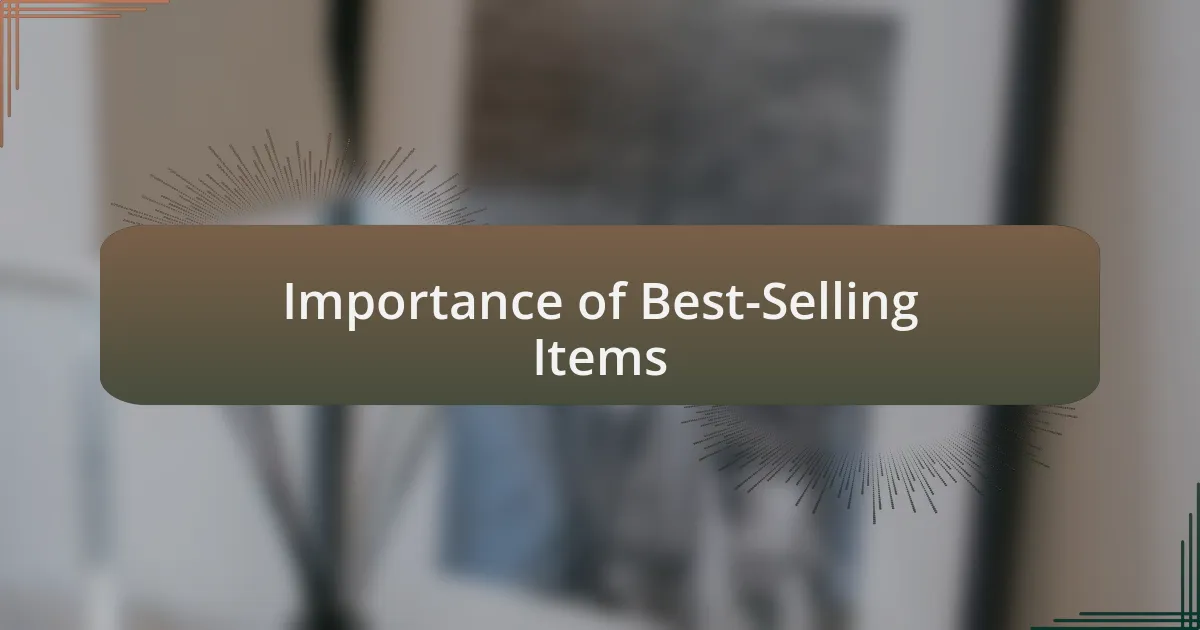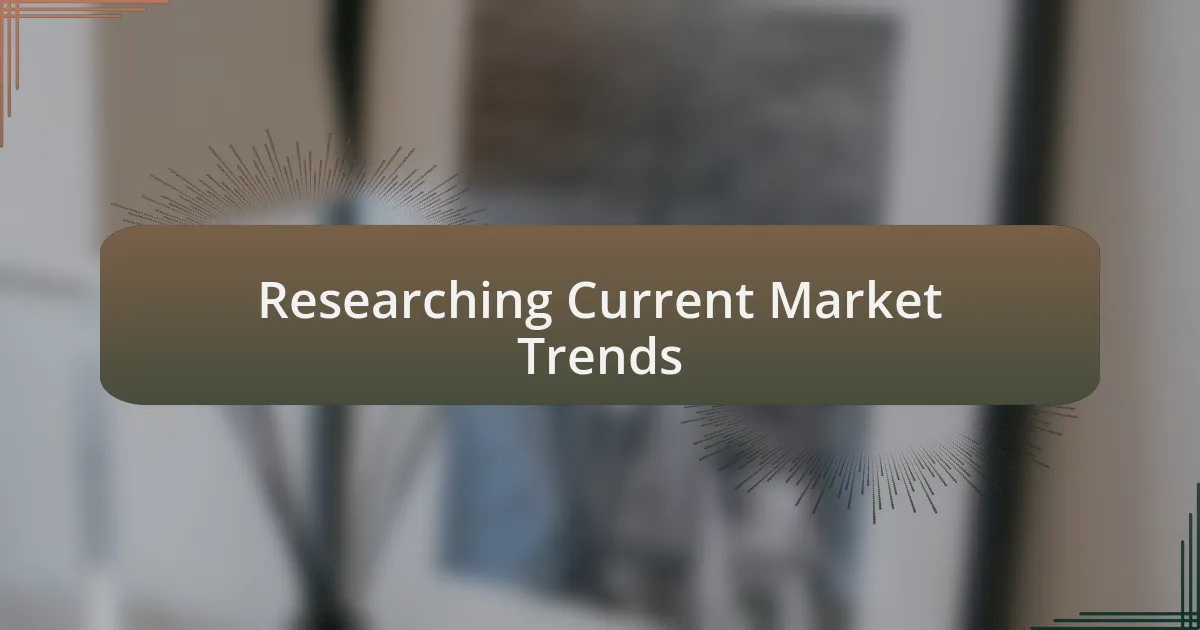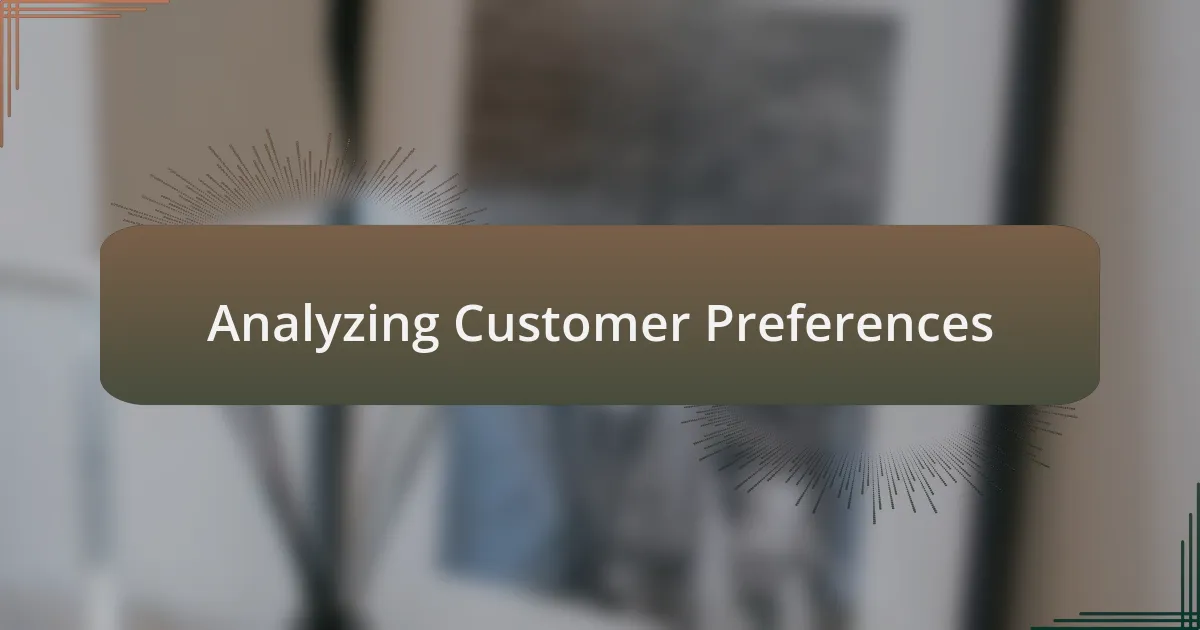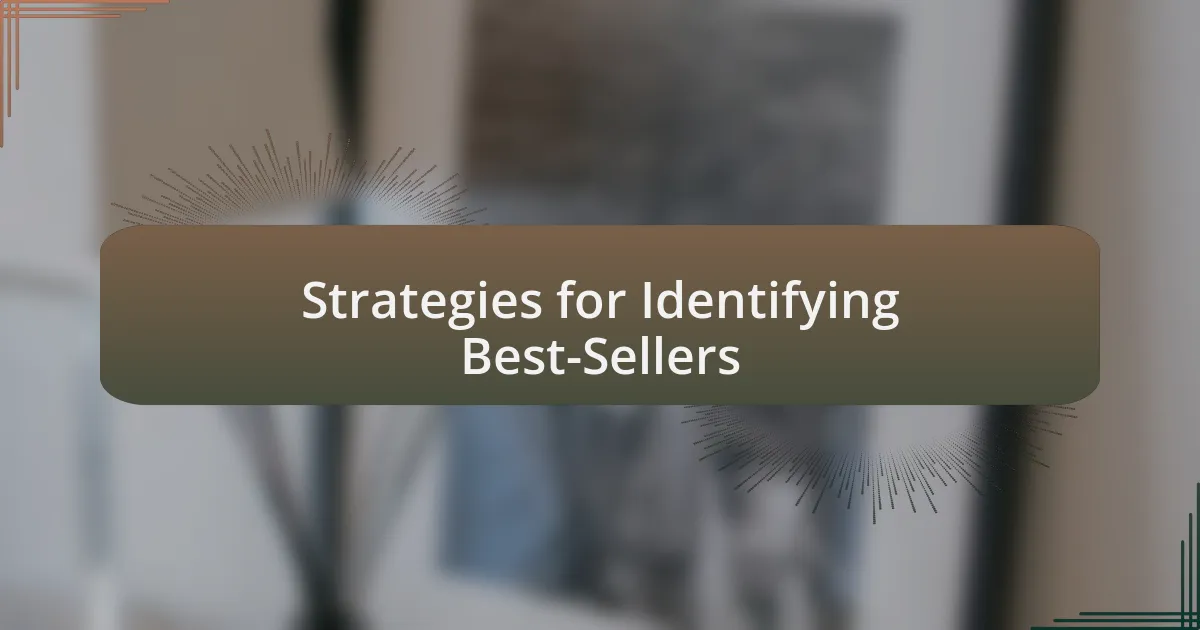Key takeaways:
- Understanding the retail environment and pricing strategies significantly influence customer buying decisions in perfume retailing.
- Identifying best-selling items and analyzing market trends helps optimize inventory management and enhance profitability.
- Engaging with customers and utilizing feedback can refine product offerings and foster loyalty, creating memorable shopping experiences.
- Continuous research and tracking sales data are essential for predicting consumer preferences and adapting to evolving market demands.

Understanding Perfume Retailing Basics
Understanding the basics of perfume retailing begins with recognizing the allure of fragrances. I remember the first time I stepped into a perfume store; the eclectic blend of scents was overwhelming yet inviting. The atmosphere is crucial—it shapes the customer’s experience and can significantly influence buying decisions.
Pricing strategies in this industry can feel like a maze. I once experimented with different price points for a signature scent and discovered that even a slight change could sway customer interest. It’s fascinating how perceived value and branding intertwine; have you ever noticed how a luxury brand can evoke a different emotional response compared to more affordable options?
Moreover, understanding your target audience is vital in this line of business. When I tailored my marketing efforts to specific demographics, the results were stunning. Have you ever considered how different age groups or cultural backgrounds might influence fragrance preferences? It’s these nuances that can make or break your success in perfume retailing.

Importance of Best-Selling Items
Best-selling items are the heartbeat of any perfume retailer. I can still recall the excitement of discovering a fragrance that flew off the shelves; it felt like unearthing a hidden gem. These products not only attract foot traffic but also cement your reputation in the industry. Have you ever walked into a store drawn by a popular scent? That’s the power of best-sellers—they create a buzz that can elevate your entire brand.
When I started identifying my best-selling fragrances, I noticed a pattern. These top performers often reflected emerging trends or seasonal preferences, making it essential to stay attuned to market dynamics. For example, a particular floral scent gained traction during spring, and its popularity taught me about the significance of timing and customer sentiment. Isn’t it intriguing how a well-timed promotion or a new release can transform sales overnight?
Moreover, understanding which items sell best allows for strategic inventory management. I learned the hard way that overstocking less popular scents can tie up valuable resources. By focusing on best-sellers, I could optimize my stock levels and enhance my cash flow. How do you manage inventory? Prioritizing best-selling items can not only simplify decision-making but also drive profitability.

Researching Current Market Trends
Researching current market trends is crucial for a perfume retailer like myself. I remember combing through social media and fragrance boards to see which scents were gaining popularity. It was fascinating to witness shifts in consumer preferences, particularly how nostalgia for classic scents could emerge alongside a demand for more contemporary, bold fragrances. How do trends shape your buying decisions?
When I stumbled upon a fragrance that suddenly became the talk of the town, it reinforced the value of continuous research. For instance, I noticed how clean, fresh scents surged in demand during the pandemic, driven by a collective desire for comfort and familiarity. This observation led me to considering the context behind trends—isn’t it illuminating how external factors impact our choices and desires?
Diving deep into analytics was another game changer for me. I began tracking sales data alongside search trends and social media mentions to forecast which fragrances would become the next best sellers. The thrill of seeing a pattern emerge, confirming what my research suggested, is truly rewarding. Have you ever felt that rush when your instincts align with the data? It’s a satisfying validation that market research can yield real results.

Analyzing Customer Preferences
Understanding customer preferences is an art that I’ve honed over the years. One particularly eye-opening moment for me was analyzing customer reviews—what they loved, what they wished was different. I remember reading a heartfelt review about a floral scent that struck a chord with someone’s childhood memories, and it hit me: emotions play a huge role in fragrance selection. How often do we choose a scent based on memories rather than mere scent notes?
I also discovered the value of surveys and direct feedback. Asking my customers about their favorite fragrances allowed me to refine my inventory based on real desires. It was during one of these customer interactions that I learned how important it is for some shoppers to have eco-friendly options. This insight not only shaped my offerings but also fostered a deeper connection with my clientele. Have you ever considered how a simple question can open a new avenue for understanding?
Finally, observing purchasing patterns made me realize that timing can be everything. For instance, I noticed spikes in sales during holiday seasons, which led me to curate gift sets tailored to those occasions. It reminded me that customer preferences are not static; they evolve with the seasons of life. How do you adapt your strategies to meet those shifts?

Strategies for Identifying Best-Sellers
Spotting best-selling items requires a keen eye on sales trends, something I’ve practiced for years. I remember the time I noticed a sudden rise in a particular vanilla scent’s popularity. Intrigued, I looked deeper and discovered that it was being featured in a popular lifestyle magazine. It made me realize how external influences can shift customer preferences almost overnight. Have you ever thought about how marketing trends can affect what people desire?
Another effective strategy involves leveraging social media. I’ve found that engaging with fragrance enthusiasts on platforms like Instagram can reveal which scents are gaining buzz. Once, I joined a discussion where someone raved about a new unisex fragrance, and I decided to order a small batch to test its potential. The excitement around that scent was palpable, and it quickly became a staple in my store. Isn’t it fascinating how social interactions can shape market demands?
Additionally, I often analyze the sales data from point-of-sale systems. This practice was invaluable when I spotted a consistent pattern with citrus-based fragrances during the warmer months. By consistently tracking such data, I’m able to anticipate what my customers will gravitate towards. When was the last time you dug into your sales data to uncover hidden gems?

Evaluating Perfume Sales Performance
When it comes to evaluating perfume sales performance, analyzing seasonal trends is crucial. I recall a time when I meticulously tracked sales during the holiday season. I noticed that certain floral scents greatly outperformed others, largely due to gift-giving trends. Have you ever considered how fragrances can evoke emotions tied to specific events?
Customer feedback plays a significant role in understanding sales performance as well. During a particularly busy weekend, I made it a point to ask customers about their favorite scents. Hearing their stories about how a certain fragrance reminded them of a loved one was enlightening. It’s these personal connections that often drive sales more than just numbers can show. Isn’t it incredible how sentiment can influence buying decisions?
Lastly, I find that staying on top of inventory turnover can provide key insights into which fragrances are resonating with customers. I once had a batch of a niche designer perfume that barely moved, until I reduced the price slightly. The shift was immediate, and it soon became a top seller. It made me wonder; how often do we underestimate the power of strategic pricing?

My Personal Tips for Success
When it comes to boosting your sales, I’ve found that engaging with your customers on a personal level makes a substantial difference. I remember an instance where I held a fragrance tasting event. Watching customers light up as they discovered their signature scent created an unforgettable connection, transforming casual shoppers into loyal patrons. Have you ever thought about how an event can create a memorable experience that encourages repeat visits?
Another tip is to keep your product displays dynamic and inviting. I always switch up the layouts and showcases regularly, as it tends to catch returning customers’ attention. Once, after a simple rearrangement, I noticed an uptick in sales for the featured perfumes. Isn’t it fascinating how a fresh perspective can breathe new life into your offerings?
Using social media as a marketing tool can also work wonders for promoting your best-selling items. I launched a campaign featuring customer testimonials and photos, which resulted in an unexpected spike in engagement. It reinforced my belief that real experiences resonate more deeply with potential buyers. Have you given thought to how sharing stories can create trust and authenticity around your brand?